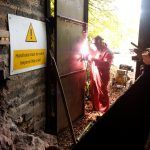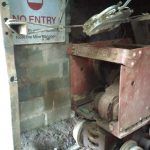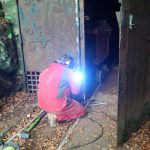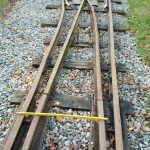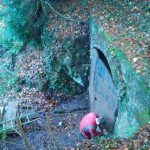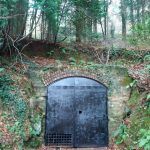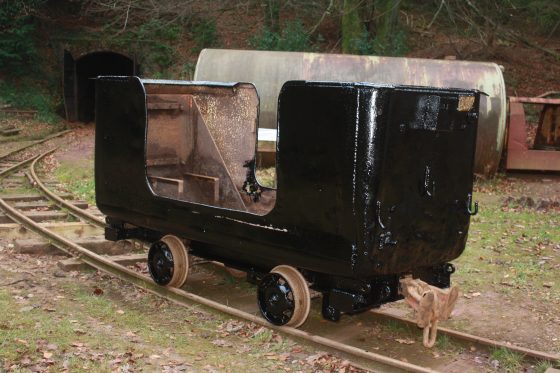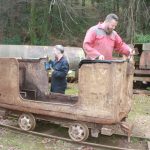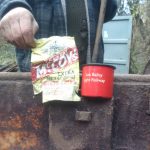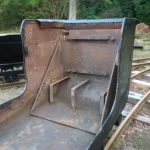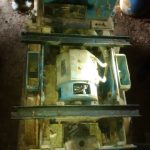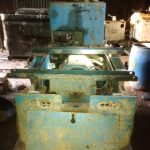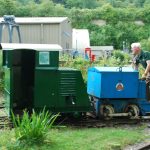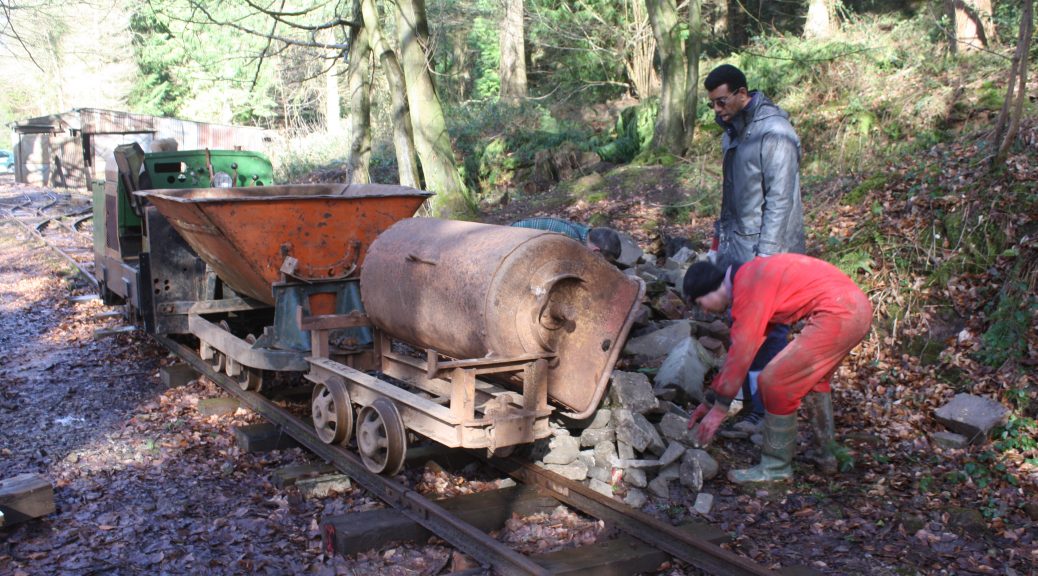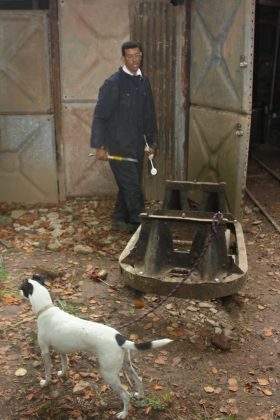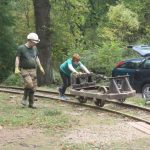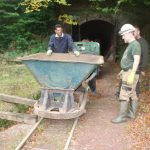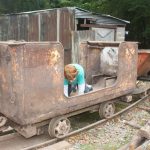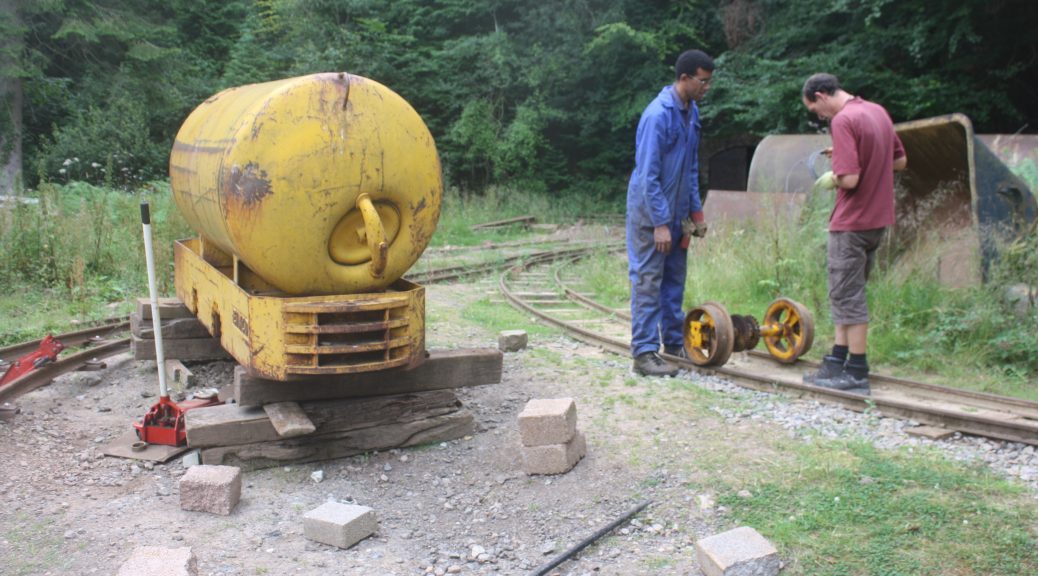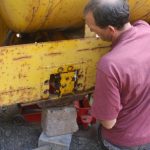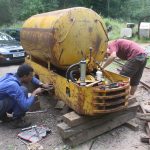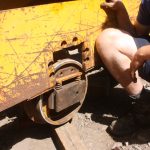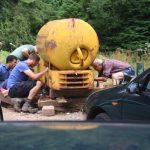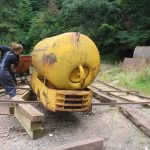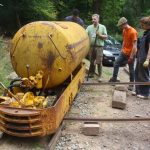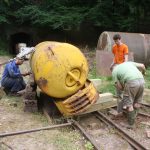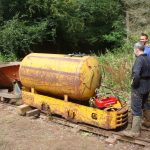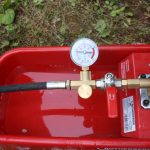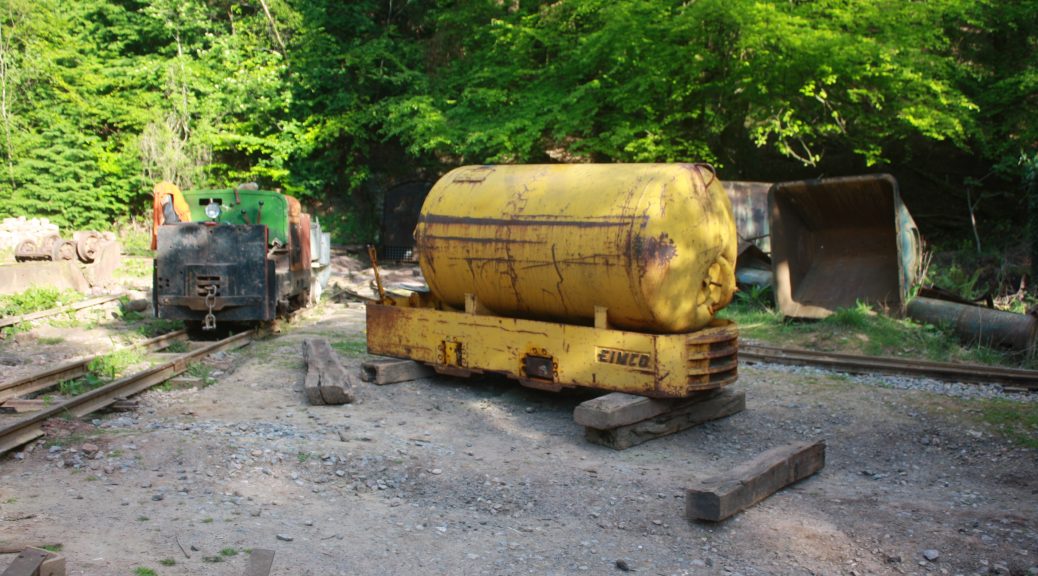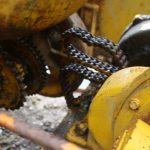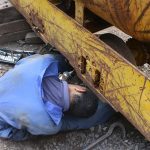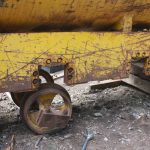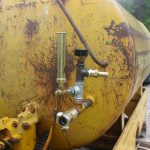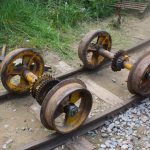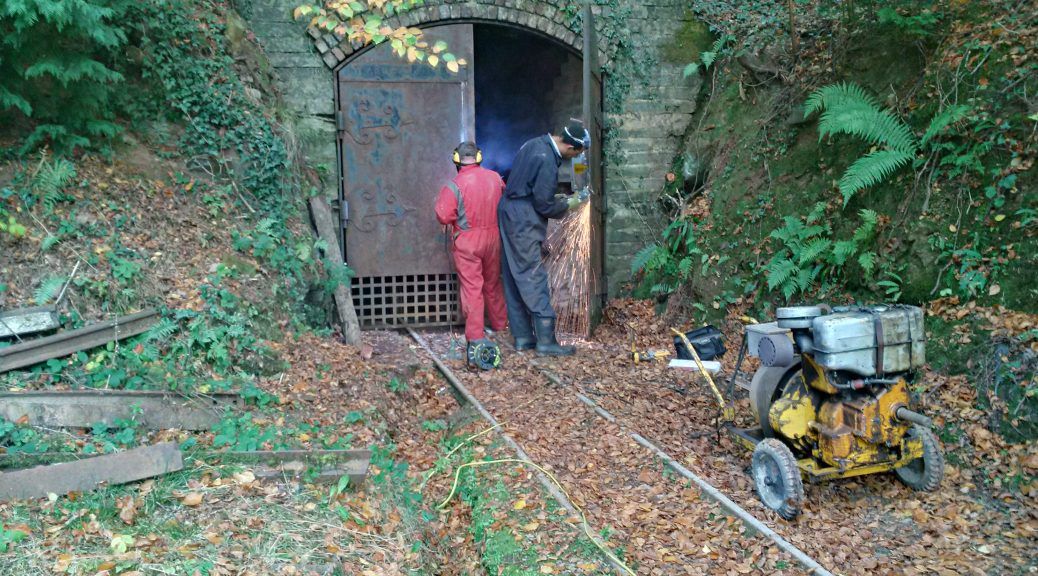
⛏ Mine Door repairs
The doors that lead into the Bailey Level mine are kept locked for safety reasons. Wild animals, small children, and even adults without the relevant training would all be at risk if they were able to enter the underground mine workings. Certain people, however, see a locked door as a challenge, and some recent visitors took it upon themselves to enter the mine uninvited, causing damage to the doors in the process.
It was good fortune that our volunteers had been planning a welding job and had brought all the necessary equipment along. The first job — an unenviable task — was to inspect the mine to make sure that our uninvited guests were not still trapped underground. Luckily our “visitors” had left the site unscathed and work could proceed with the repairs.
Using the rocker shovel and a tirfor winch, the bent part of the door was straightened and a piece of angle was welded on to strengthen it. Further pieces of steel were welded on to make a strong section to lock the door. Several addition pieces of angle have been welded onto the outside to prevent crow bars and other objects from being inserted in an attempt to lever the doors open. Other measures will also be taken to make the doors secure against unauthorised entry.
The job that was planned for the welder was also carried out — welding one of the rails to the baseplate to keep the new points to the correct gauge. In early November the doors were cleaned up with scrapers and a wire wheel and given a coat of black bitumen paint.
